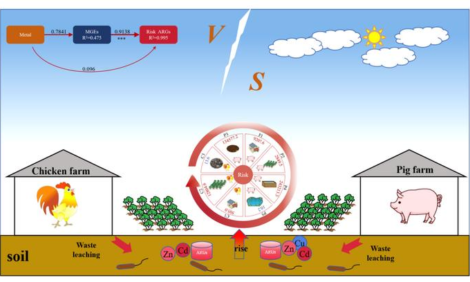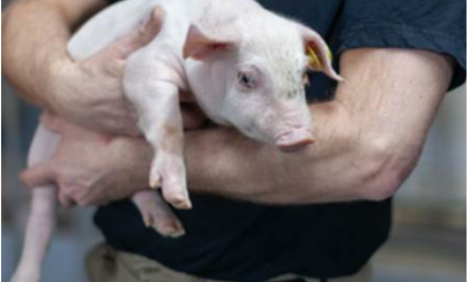



The value of manure sampling and use on crop acres
By Greg Brenneman, Johnson County Extension; and Sherry Hoyer, Iowa Pork Industry Center - A recent study designed to educate Iowa producers on how to better use swine manure as a fertilizer and to encourage them to test their manure for nutrient content before applying it has produced some unexpected positive results. Study leaders Greg Brenneman and Kris Kohl say these results should help producers realize that manure sampling need not be difficult to be effective; a simple collection procedure can be used without affecting the accuracy of the sampling.
Study leaders Greg Brenneman and Kris Kohl say these results should help producers realize that manure sampling need not be difficult to be effective; a simple collection procedure can be used without affecting the accuracy of the sampling.
The two Iowa State University Extension agricultural engineers designed the study that was funded by the Iowa Pork Industry Center. Manure sampling of deep pits was conducted at 20 locations throughout Iowa, and five different samples from each pit were compared. A profile sample and a surface sample were taken prior to land application and three samples were collected while the pit was being pumped. Profile samples were collected with a probe and surface samples were collected with a bucket.
Samples were analyzed at a commercial laboratory and the results were somewhat surprising. Not only was there less variability within a pit than expected but also many of the samples showed higher nutrient content values in the surface sample than the profile sample. These data were combined with similar data from a separate project in Sioux County and analyzed at the ISU Statistical Lab to determine the best presampling technique for assessing nutrient content of manure to be field-applied. The combined results show that, when looking for nitrogen prediction, a sample collected from the pit surface was superior to the probe (profile sample) of the pit. For P2O5, the profile sample was better, although the difference was small.
Manure testing is an important management tool for determining the correct rate of manure application to fields for optimum crop yields, without causing environmental damage. Because all manure studies show variation between pits, producers get the best results by conducting their own testing. The ideal time for collecting manure samples is during agitation and land application, but average laboratory turnaround time is 10 to 14 days. By the time the analysis reaches producers, the manure application is complete and no rate adjustments are possible.
Because most producers are applying swine manure based on its nitrogen content, and the surface sample is a better predictor of nitrogen content, producers should plan to use the surface sampling technique that requires only a plastic pail. Although book values can be used to estimate nutrient content of deep pit manure, doing the individual pit testing provides the most accurate and timely levels.
A second part of the study involved field trials with swine finishing manure as the sole source of fertilizer for corn following soybean. In 1999 and 2000 at two different locations, fall-injected swine finishing manure applied at approximately 4000 gallons per acre produced as high or higher yields than normal rates of commercial fertilizer. Also, addition of more manure or nitrogen did not result in additional yield.
Data from this study help validate the reliability of manure testing and help make recommendations regarding sampling prior to pumping out a pit. By knowing the amounts of specific nutrients in the manure from their operation, producers gain confidence in using swine manure for meeting their crop nutrient needs.
Results of this study also should encourage more producers to accurately and easily test for nutrient content and use the manure as a valuable fertilizer source for their crop acres. Project findings are being summarized and will be included in upcoming confinement site manure applicator certification programs offered by ISU Extension.
For additional information about manure sampling, see the article Sampling and agitation of swine manure pits in the Fall 2000 issue of this newsletter.
Source: Iowa Pork Industry Center - Fall 2001









